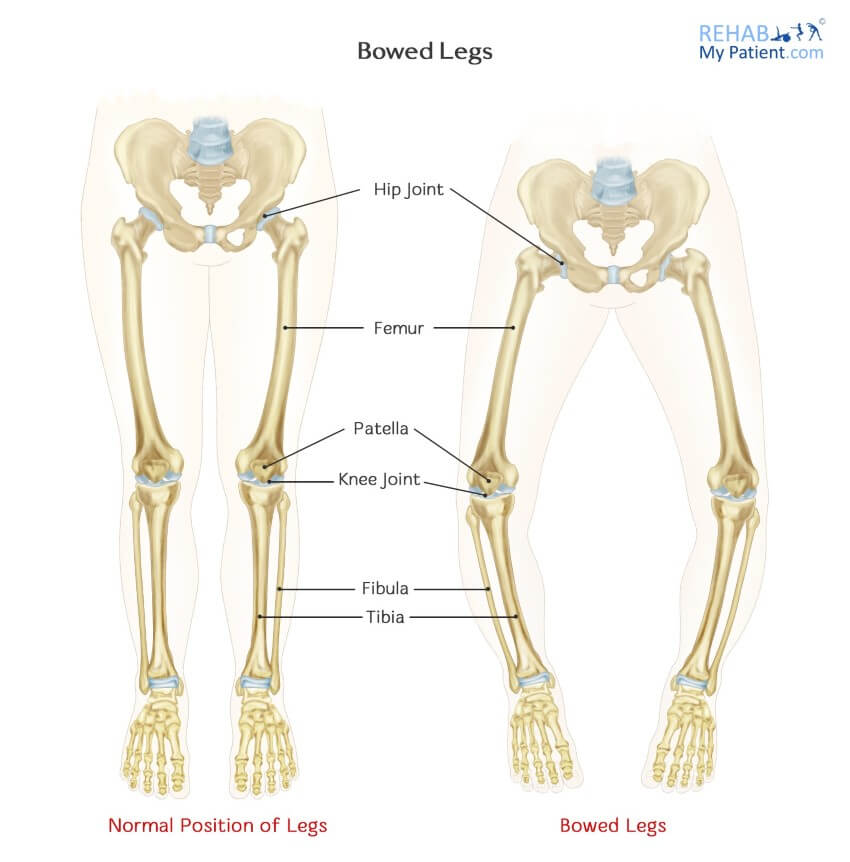
Bowed leg tends to be quite common in toddlers. When the child with bowed legs stands with their feet together, there is a large space between the knees and the lower legs. It could be the direct result of one or both legs curving outward. As a child learns to walk, this bowing will in most cases reduce and the leg will become straight. Another cause of bowed legs is malnutrition, and also children who are overweight.
Bowed Legs Anatomy
The skeleton is a living structure that works to support the entire body. Bones are composed of an outer shell of dense bone surrounding a honeycomb structure of softer bone. Bone is composed mainly of calcium and protein. If the bones don’t have calcium, they will become weak. Two sections make up the human skeleton: the axial section, which consists of 80 bones including the spine, skull and chest, and the appendicular skeleton, which consists of 126 bones that includes the limbs, hands, feet and pelvic girdle.
How to treat bowed legs:
- Pain medications
For short-term pain relief, pain medications can provide you with the assistance you need to make an informed decision about how to proceed with your specific case of bowed legs.
- Calcium and Vitamin D supplements
Healthy bones is important to your overall growth and health, which is where calcium and Vitamin D come into the equation. Promoting bone strength will help to make sure the bowing does not worsen.
- Anti-Inflammatory Medications
Taking an anti-inflammatory will help to reduce the amount of swelling and pressure felt in the legs. By minimizing any swelling, you can help to eliminate the excess pain associated with bowed legs.
- Surgery
A total hip replacement might be the only way to correct the problem. By replacing the hip, the bones in the lower extremities can also be corrected to make sure they are in line and not bowed. Spinal surgery can also help to reverse the effects of any spinal cord compression. Relieving the compression and abnormalities will help you to feel better and move freely.
- Walker or crutch
For those who have bowed legs, a cane or walker can help you to move about without having to strain as badly. Since the lower extremities are involved, the cane can help to alleviate some of the pressure on that part of the body.
- Physical therapy
Therapy can be useful to teach proper gait technique, strengthen muscles around the legs, and ensure surrounding joints are not badly affected.
Tips:
- Bowed legs becomes most obvious whenever the child walks or stands. If you notice your child walking with an awkward pattern, it could be that they are suffering with a form of bowed legs.
- Toddlers that have bowed legs won't be delayed in their walking. These individuals will have normal coordination. The bowing can be significant and quite alarming to the parents and other members of the family.
- Toddlers with bowed legs will often have turning in of the feet.
- Bowed legs are not painful, but they can lead to discomfort in the knees, ankles and hips from the extra stress on the curved legs for these joints.
- If bowing is present, getting an evaluation is important to know what you are dealing with and how to treat it.
Sign Up
Sign up for your free trial now!
Get started with Rehab My Patient today and revolutionize your exercise prescription process for effective rehabilitation.
Start Your 14-Day Free Trial